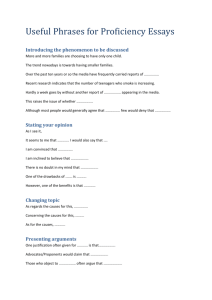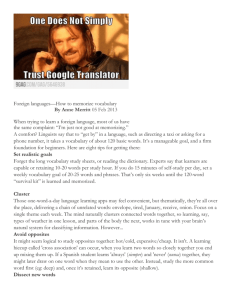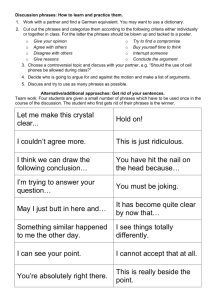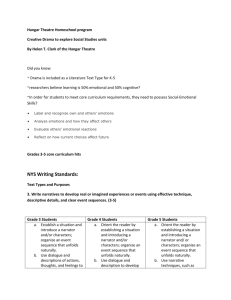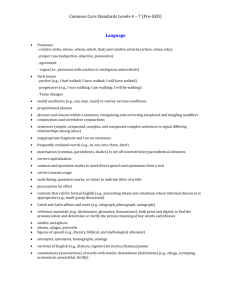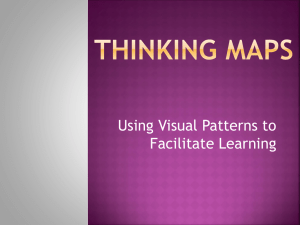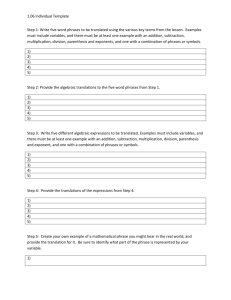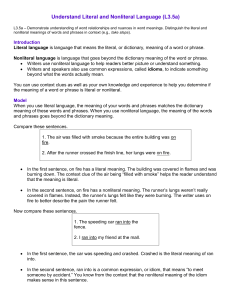Livingston County Schools 3rd Grade Unit 3 Friends to Grow With
advertisement
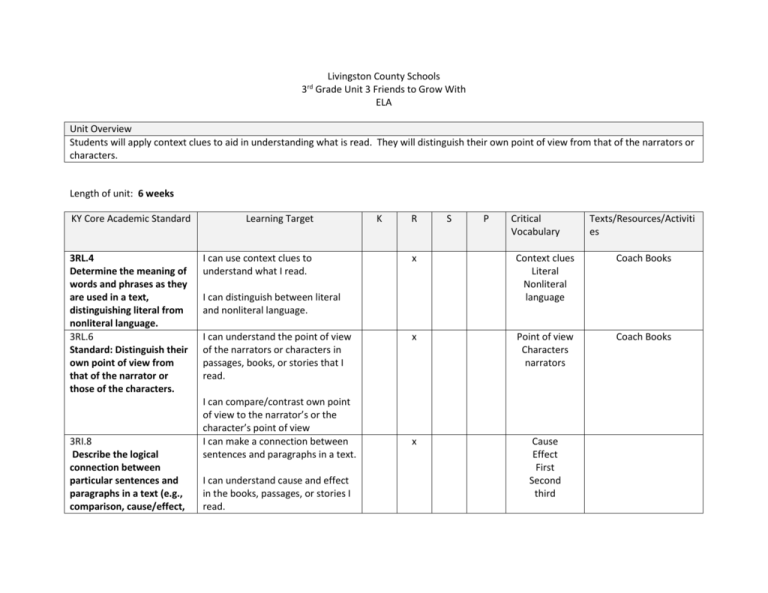
Livingston County Schools 3rd Grade Unit 3 Friends to Grow With ELA Unit Overview Students will apply context clues to aid in understanding what is read. They will distinguish their own point of view from that of the narrators or characters. Length of unit: 6 weeks KY Core Academic Standard Learning Target 3RL.4 Determine the meaning of words and phrases as they are used in a text, distinguishing literal from nonliteral language. 3RL.6 Standard: Distinguish their own point of view from that of the narrator or those of the characters. I can use context clues to understand what I read. 3RI.8 Describe the logical connection between particular sentences and paragraphs in a text (e.g., comparison, cause/effect, K R I can compare/contrast own point of view to the narrator’s or the character’s point of view I can make a connection between sentences and paragraphs in a text. I can understand cause and effect in the books, passages, or stories I read. P Critical Vocabulary Texts/Resources/Activiti es x Context clues Literal Nonliteral language Coach Books x Point of view Characters narrators Coach Books x Cause Effect First Second third I can distinguish between literal and nonliteral language. I can understand the point of view of the narrators or characters in passages, books, or stories that I read. S first/second/third in a sequence). I can correctly read and use terms such as first, second, third in a sequence. 3.W.3a-d I can: Write narratives to develop *Write a narrative that includes real or imagined characters and organize it using experiences or events using sequencing skills. effective technique, descriptive details, and *use dialogue and descriptions of clear event sequences. actions, thoughts, and feelings of a. Establish a situation and the characters in my story. introduce a narrator and/or characters; organize an event sequence that unfolds naturally. b. Use dialogue and descriptions of actions, thoughts, and feelings to develop experiences and events or show the response of characters to situations. c. Use temporal words and phrases to signal event order. d. Provide a sense of closure. 3.W.6 With guidance and support from adults, use technology to produce and publish writing (using keyboarding skills) as well as to interact and collaborate with others. x Prewriting Rough draft Edit Final draft Narrative Dialogue Sequencing conclusion x Produce Publish Spellcheck Keyboarding skills Collaborate Edit *use sequencing words in my narrative to signal event order. *write an ending to my narrative. I can: *use technology to produce and publish my writings *use keyboarding skills *collaborate with peers and adults to improve my writings. 3.L.2c, d Demonstrate command of the conventions of standard English capitalization, punctuation, and spelling when writing. a. Capitalize appropriate words in titles. b. Use commas in addresses. c. Use commas and quotation marks in dialogue. d. Form and use possessives. e. Use conventional spelling for high frequency and other studied words and for adding suffixes to base words (e.g. sitting, smiled, cries, happiness). f. Use spelling patterns and generalizations (e.g. word families, position-based spellings, syllable patterns, ending rules, m 3.L.3a. Use knowledge of language and its conventions when writing, speaking, reading, or listening. a. Choose words and phrases for effect. b. Recognize and observe I can: *Correctly use commas and quotation marks in dialogue. x *form and use possessives. I can choose words and phrases for effect in my writing, speaking, or reading x differences between the conventions of spoken and written standard English. 3.L.4b Determine or clarify the meaning of unknown and multiple-meaning words and phrases based on grade 3 reading and content, choosing flexibly from a range of strategies. b. Determine the meaning of the new word formed when a known affix is added to a known word (e.g., agreeable/disagreeable, comfortable/uncomfortab le, care/careless, heat/preheat). 3.L.5a Demonstrate understanding of word relationships and nuances in word meanings. a. Distinguish the literal and non-literal meanings of words and phrases in context (e.g., take steps). 3.L.6 Standard: Acquire and use accurately gradeappropriate conversational, general I can determine the meaning of a new word when a known prefix or suffix is added to it. x I can distinguish the literal and non-literal meanings of words and phrases in context. x I can use words or phrases when I speak that signal spatial and temporal relationships academic, and domainspecific words and phrases, including those that signal spatial and temporal relationships. (e.g., after dinner that night we went looking for them). Common Assessments Developed (Proposed Assessment Dates): Spiraled Standards: 3.RL.2, 3RL.5, 3.RL.9, 3.F.3a,b, 3.F.4b, 3.W.4, 3.W.10, 3.L.4a,c,d, 3.W.2b HOT Questions: 3.RL.4 Explain the difference between literal and non-literal language. 3.RL.6 Differentiate your point of view from the point of view of the narrator/story character and explain the differences. 3.RI.8 Describe how sentences and paragraphs in the story connect to each other to create meaning in the story. 3.W.3a-d Create a proficient narrative writing using sequencing skills, dialogue creation, and descriptive language . 3.W.6 Publish produced writing using technology and support from peers and adults. 3.L.2c-d Use correct rules for punctuation and possessives in creation and publishing of original writings. 3.L.3a Describe how you choice of words and/or phrases affects the meanings of your writing. 3.RL.4b Explain how you can determine the meaning of a new word based on adding an affix you know. 3.5a Explain how you distinguish between when a word or phrase is used literally and non-literally. 3.L.6 Describe why it is important to use words accurately when speaking to others in conversation and when explaining information to others

